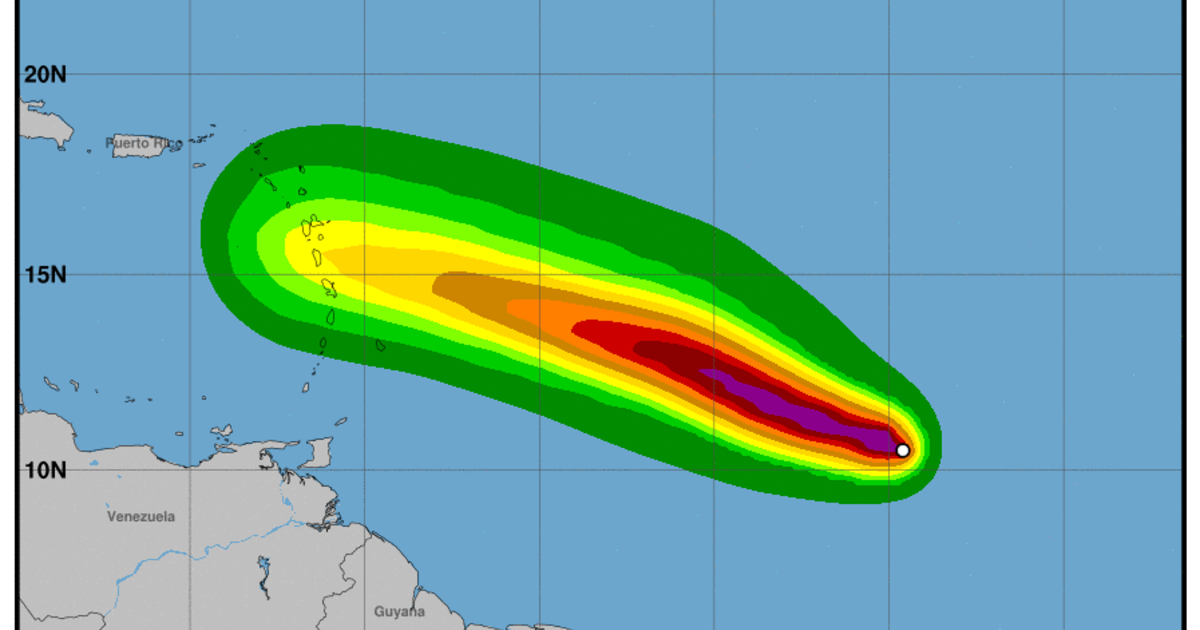Path of Hurricane Beryl

Path of hurricane beryl – Hurricane Beryl was a Category 3 hurricane that made landfall in the United States in 2018. The hurricane formed in the Atlantic Ocean and tracked westward, eventually making landfall in Florida. The storm caused widespread damage and flooding, and it is estimated that the total economic impact of the hurricane was over $1 billion.
The path of Hurricane Beryl is expected to take it near Puerto Rico in the coming days. The storm is currently located in the Atlantic Ocean and is moving west-northwest. Forecasters say that Beryl is expected to strengthen into a Category 3 hurricane by the time it reaches Puerto Rico.
The path of Hurricane Beryl was influenced by a number of factors, including atmospheric conditions, ocean currents, and topography. The storm formed in an area of warm ocean water, which provided the energy needed for it to develop. The storm also tracked westward along a path that was steered by the prevailing winds in the Atlantic Ocean. Finally, the topography of the land that the hurricane made landfall on also played a role in its path. The mountains in Florida helped to weaken the storm as it moved inland.
Hurricane Beryl has been swirling in the Atlantic, and forecasters are tracking its path closely. To help predict where the storm might go, meteorologists are using spaghetti models, which show a range of possible tracks. These models can be found online, including on the website tropical storm beryl spaghetti models.
By looking at these models, experts can get a better idea of where Hurricane Beryl is headed.
Impact of Hurricane Beryl
Hurricane Beryl had a significant impact on the coastal communities that it affected. The storm caused widespread damage to homes and businesses, and it also led to flooding and power outages. The storm also forced many people to evacuate their homes. The total economic impact of the hurricane is estimated to be over $1 billion.
Predicting the Path of Hurricane Beryl

Predicting the path of hurricanes is a complex task that involves using a variety of meteorological models and data sources. These models are constantly being improved, but they still have limitations.
One of the most important factors in predicting the path of a hurricane is the Coriolis effect. This effect is caused by the rotation of the Earth, and it deflects hurricanes to the right in the Northern Hemisphere and to the left in the Southern Hemisphere. The Coriolis effect is stronger at higher latitudes, so hurricanes tend to curve more as they move away from the equator.
Another important factor in predicting the path of a hurricane is the steering currents. These currents are caused by the large-scale circulation of the atmosphere, and they can push hurricanes in a particular direction. The steering currents can change over time, so it is important to track them closely.
Satellite imagery is also used to track hurricanes and predict their paths. Satellite images can show the structure of a hurricane, and they can also be used to measure its wind speed and direction. Weather balloons are another important data source for hurricane forecasting. Weather balloons are released into the atmosphere, and they can collect data on temperature, humidity, and wind speed and direction.
Despite the advances in hurricane forecasting, there are still challenges and uncertainties involved in predicting the path of a hurricane. One of the biggest challenges is that hurricanes can change direction suddenly. This can make it difficult to predict where a hurricane will go, especially in the long term.
Another challenge is that hurricanes can interact with each other. If two hurricanes are close to each other, they can affect each other’s paths. This can make it even more difficult to predict where a hurricane will go.
Despite the challenges, hurricane forecasting has improved significantly in recent years. This has helped to save lives and property.
Mitigating the Impacts of Hurricane Beryl

Hurricanes are powerful and destructive storms that can cause widespread damage and loss of life. It is important to be prepared for a hurricane and know how to respond if one threatens your area. This plan provides a detailed guide on how to prepare for and respond to a hurricane, including evacuation procedures, emergency supplies, and communication strategies.
Government Agencies, Disaster Relief Organizations, and Community Volunteers, Path of hurricane beryl
Government agencies, disaster relief organizations, and community volunteers play a vital role in hurricane preparedness and response. Government agencies provide funding and resources for hurricane preparedness and response, including evacuation assistance, emergency shelters, and debris removal. Disaster relief organizations provide food, water, shelter, and other assistance to victims of hurricanes. Community volunteers help with evacuation efforts, provide support to victims, and help with cleanup and recovery efforts.
Effectiveness of Mitigation Measures
There are a number of mitigation measures that can be used to reduce the impacts of hurricanes. These measures include seawalls, storm surge barriers, and building codes. Seawalls are large structures built along the coast to protect against flooding from storm surges. Storm surge barriers are gates or other structures that can be closed to block storm surges. Building codes require buildings to be constructed in a way that can withstand high winds and flooding.
The effectiveness of these mitigation measures depends on a number of factors, including the size and intensity of the hurricane, the location of the affected area, and the condition of the infrastructure. However, these measures have been shown to be effective in reducing the impacts of hurricanes and saving lives.